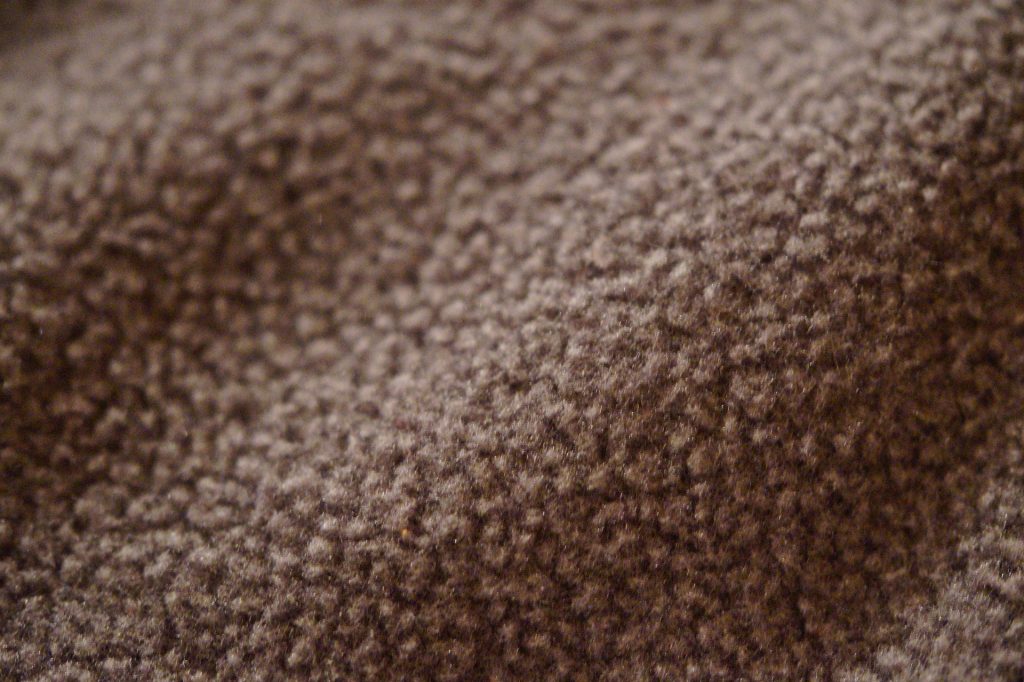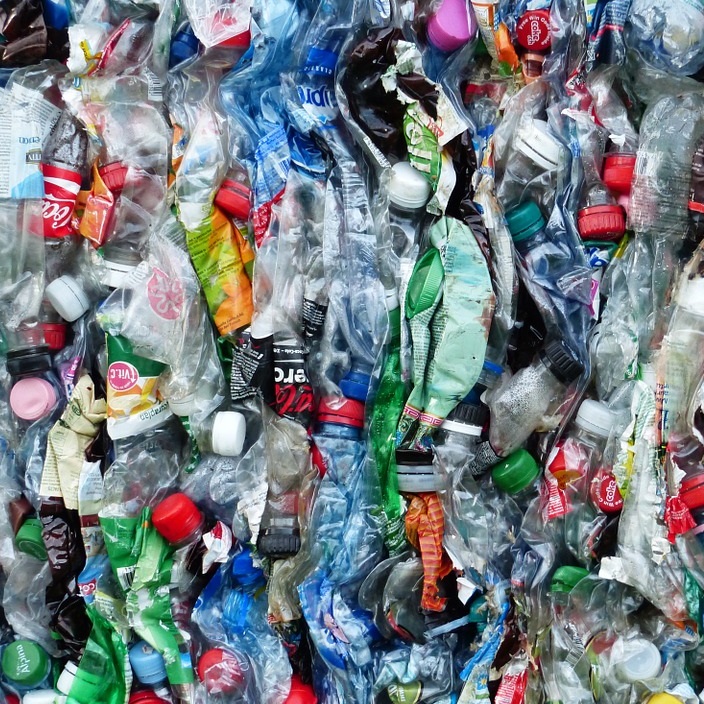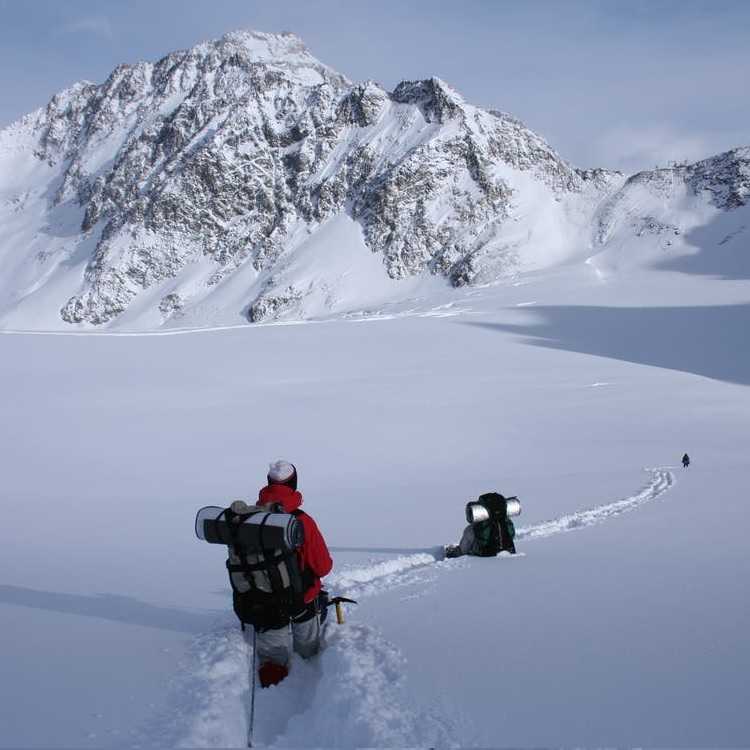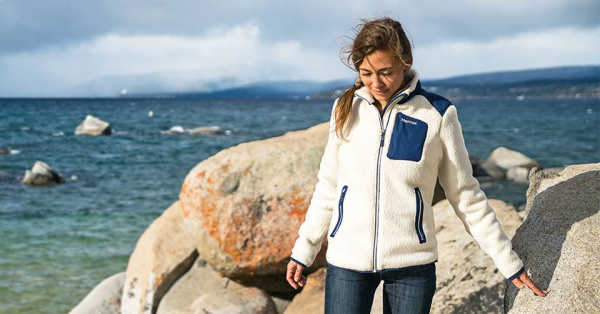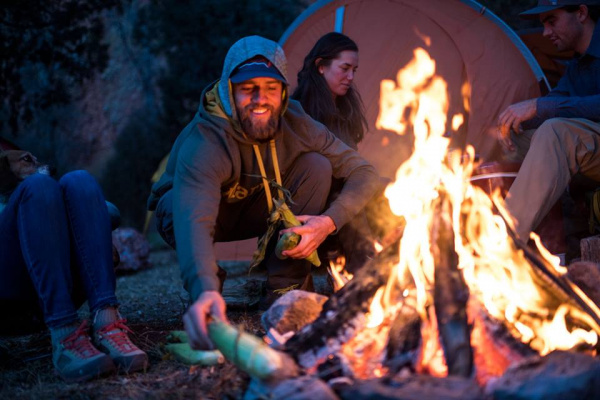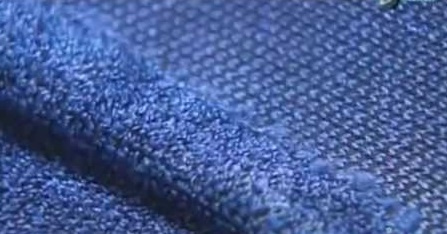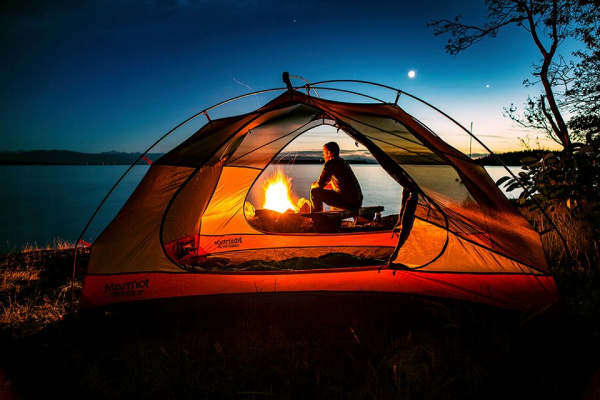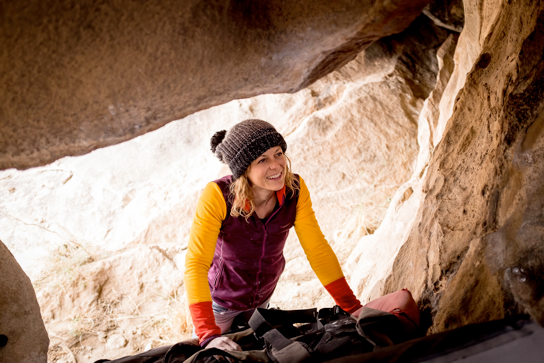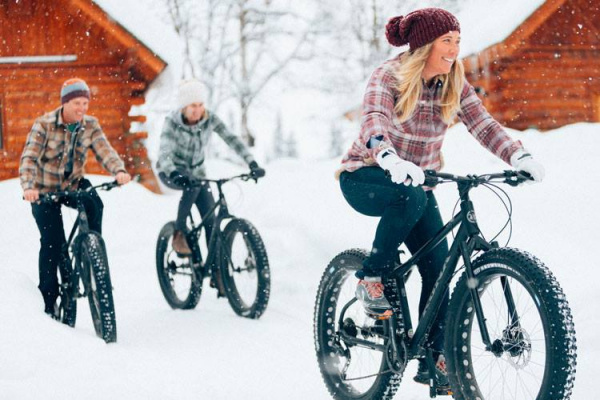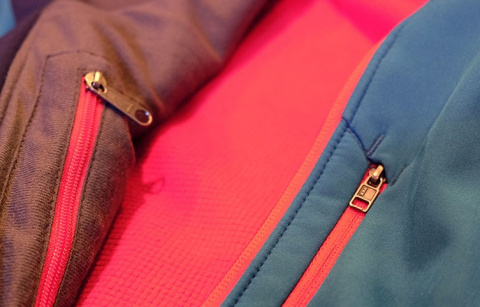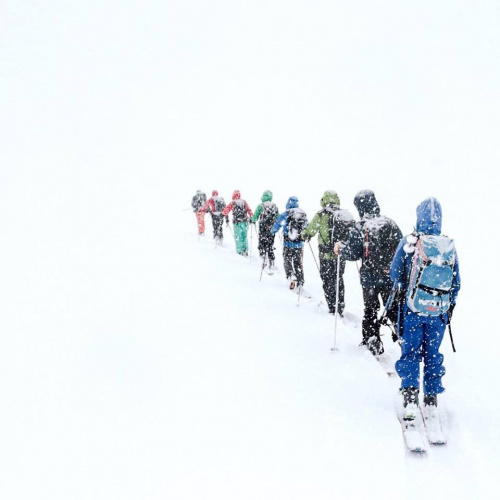What is fleece clothing
What is fleece clothing
What is Fleece, and Why is This Synthetic Chosen Over Natural Fabrics?
What is Fleece?
Fleece is a man-made wonder product, if there is such a thing. Despite being named after the ‘fleece’ coat on a sheep, it’s 100% synthetic and derived from plastic rather than a fluffy sheep’s coat – despite being fuzzy to the touch. The super soft, warm and breathable nature of this magic material makes it perfect for outerwear and all things cosy.
What is Fleece Made From?
Typically, this fabric is created from polyester (which comes from plastic). The fibres of polyester are woven into a light fabric which is brushed to help the fibres increase in volume. Occasionally other natural fibres are incorporated into the fleece such as wool, hemp or rayon to create a certain texture or vibrancy of the fabric. It can also be made from recycled plastics such as plastic water bottles, giving it an eco-friendly edge whilst being inexpensive.
How is Fleece Made?
For polyester fleece, the polyester fibres needs to be made first. This is created using a chemical reaction involving petroleum and petroleum derivatives. The chemicals are heated until they form a thick syrup, which then hardens and is spun to form threads. Because of the structure of the fibres, fleece is extremely warm and breathable and allows air to flow through it easily.
Its Characteristics:
The characteristics of this fabric make it incredibly useful for keeping warm, particularly whilst being active. Fleece has a pile surface on both sides of the fabric, meaning each side has a layer of cut fibres. Air pockets can sit between the threads in this pile surface, meaning the material can hold in that bit more warmth.
Not only is polyester fleece warm and durable, but it is moisture resistant making it ideal for extreme weather conditions or for sportswear which it became popular for in the 1990s, due to it being warmer than wool and much lighter to wear.
What is Fleece Used For?
This fabric has been used for everything from ear-warmers for baby calves, to underwear for astronauts. It’s versatility makes it one of the most commonly used fabrics in the textile industry today.
As mentioned, fleece is the ideal material for athletic garments. The cloth wicks perspiration and moisture away from the body, keeping athletes dry, while letting air circulate through the fibres. It has also been known to keep odours from sweating at bay!
The short pile fabric increases the body temperature when it’s against the skin, making fleece the go-to fabric for warming Winter garments. Coats, scarves, gloves, blankets are often made from this lovely cosy material to create long-lasting and extra warm Winter wear.
Origins & History
Fleece originated in the 1970s when Malden Mills developed polyester fleece, which was the basis on which all modern fleece was created. Malden Mills was previously known for producing faux fur and wool garments, and the company wanted to replicate the insulating nature of these fabrics without the issues that come with natural wool (e.g. being wet when heavy, and needing sheep to create it).
Malden Mills partnered with outdoor clothing company Patagonia, together deubting Synchilla fleece – a strong, pile fabric made to imitate wool.
The owner of Malden – Aaron Feuerstein – decided not to patent fleece, allowing it to be accessible to the masses and inexpensive to purchase. Now working under the name PolarTec, the company continues to make it’s famous fleece today.
Fleece Vs Wool
Generally, fleece is preferred over wool because it is softer and much lighter in weight. Some people also find themselves itchy when they wear wool, but this reaction is unlikely to happen with synthetic polyester. However, wool has the advantage of being totally natural and environmentally friendly, whereas fleece is only eco-friendly if produced from recycled plastics.
Fleece:
Surprisingly, fleece often comes out on top, essentially being a lighter and more breathable version of wool, with all the warmth and comfort of a natural fabric.
How Easy Is It To Print On It?
Surprisingly so. If you don’t believe us why don’t you order a test print and find out exactly how easy it is. Simply upload your design, be it a photograph, piece of art or even a snap of a surface pattern you like, and position it as you want it.
Feel and explore polar fleece and over hundred other fabrics with your own swatch pack.
Different Types of Fleece: Blizzard vs Anti-pill vs Polar
Contrary to the name, f le ece is a good fabric to wear and it is not cold as a blizzard. In fact, the fleece fabric can be quite warming, as it is used to make varieties of plaid shirts for winter use. Also, fleece can be very soft to the touch when made the right way.
Fleece can be made from a variety of sources. There is cotton, polyester, micro, sherpa, french Terra and other varieties. Those options can be subdivided further into the categories of blizzard, anti-pill and so on.
To learn all about fleece, its origins, its different styles and so on, all you have to do is continue to read our article. Exploring the world of fleece opens up whole new fabric worlds and should give you some great sewing ideas.
What is Fleece
Before we get started a little history of the fabric is in order. Natural or organic fleece has been around since sheep first came into existence. It is what the sheep’s wool is often called before it is sheared and turned into usable fabrics you can sew with.
Unnatural or non-organic fleece is generally made from polyester fibers that come from plastics. The first step in making man-made fleece is to take the plastic and put it through a process turning it into thread.
The thread is then woven together and brushed till it gets a nice fluffy characteristic. Once that is done the fleece is turned into fabric, sold as thread and so on. This is just one man-made process as fleece can be made from different sources including spandex, lycra, yarn and so on.
Its main quality is that it can be a very warm fabric to wear and it really helps keep the cold out when winter comes.
What kind of Fabric is Fleece
Fleece is both organic and non-organic fabric that is usually used for cold-weather clothing and blankets. It can be used to replace plaid on plaid shirts because it can be a tough material as well.
It is an easy fabric to sew as it is soft and pliable. It is not like leather which can be very stiff and hard. Also, fleece is an eco-friendly fabric helping to use plastic materials before they make it into the oceans.
Or the fabric can be made from recyclable plastics which help clean up the plastic problem the world has been facing for the past few decades. What that means is that fleece is a very versatile fabric that has a variety of sources from which it can be made.
Organic fleece is also a renewable fabric as the sheep regrow their wool and can be sheared often over their life span.
Different Types of Fleece
There are about 8 common fleece fabrics. Each one has its own purpose and use. Here is a list of those varieties :
Blizzard Fleece vs Anti-Pill Fleece
Blizzard style fleece is supposed to be a better grade quality than anti-pill fleece. It is supposed to be smoother than anti-pilll fleece making it a nice fabric to wear next to your skin.
Both are brushed to add the fluffy quality but anti-pill is designed to do exactly what its name says- it does not pill as much as Blizzard fleece if it pills at all. The anti-pill version can come in sizes up to 85 inches wide and is used primarily for blankets.
The Blizzard fleece’s claim to fame is that it is the more inexpensive version of polar fleece. You can save some money by using that fabric to line your clothes than if you used polar fleece.
But if washing and drying results are very important to you then you would want to use anti-pill fleece as it does not bunch up as Blizzard fleece can. Both fabrics are very washable and durable so you are not losing anything here.
At the end, which fleece fabric you use will be up to your project and preferences.
Blizzard Fleece vs Polar Fleece
Polar fleece has more versatility as it has a wide range of uses. It works in hats, sweaters, gym clothes, blankets, and many more clothing items. This style of fleece is often made from recyclable material and is made to be very soft and easy to clean.
Polar fleece got its start in 1979 and was designed to mimic real fleece from sheep. It can be very lightweight, soft and very warm. Blizzard fleece is the cheaper version of Polar thus it should and does have some of the same qualities as its more expensive counterpart.
It is good for no-sew projects, bathrobes, sweaters and like Polar fleece it should come in pill and no pill options. Both types of fleece are soft and help resist water so you can’t lose if you take one over the other. Your decision on which one to use may boil down to how much you want to spend at the time.
Polar Fleece vs Plush Fleece
Plush fleece is probably one of the thicker fleece fabric options out there. It can be known as coral fleece and it is well known for its 3mm thick plush design on both sides of the fabric.
Both do a great job lining coats, robes and so on. The difference between the two may be in their feel with the plush a lot softer and more cuddly than the polar. Polar fleece may beat plush when it comes to keeping the cold away from your body. Both are easy to keep clean.
Also, they should not be that hard to sew through, if you want to sew by hand. They are flexible materials so sewing with a sewing machine should not be that difficult either.
Fleece vs Micro Fleece
If we are talking about organic fleece versus micro-fleece then we are trying to compare natural wool with synthetic wool and the natural version will come out on top.
While some fleece is eco-friendly, using natural products is usually healthier, warmer and so on. One of the areas of life that micro-fleece beats organic fleece is in baby care. The former is used in diapers because of micro-fleeces ability to repel moisture.
Also, micro fleece’s softness makes it a popular fabric to use in women’s intimate products, at least the washable variety. Micro-fleece normally doe snot scratch the skin.
Another strength microfleece has is its thin design. It is usually brushed on both sides making it very soft no matter how you place it. Plus, it is lightweight so you do not feel weighed down when you wear articles of clothing made by this fleece option.
Then micro fleece is good for insulation when the weather has only turned cool and not cold.
How to Choose Fleece
While every variety of fleece has its own unique and individual characteristics, there are some general questions you can ask to help you choose the right fleece fabric for your sewing project.
Tips for Sewing Fleece
Not everyone is an expert at sewing fleece. That is why it is always good to get a few tips to help you master the fabric and produce great fleece clothing or blankets:
Some Final Words
You can’t go wrong if you turn to fleece fabric to help you stay warm all winter. This is a top fabric that is designed t handle cooler to cold weather with ease. The key is to get the right fleece fabric for your specific project.
Fleece is not hard to work with and if you follow the tips you should do okay. Just make sure you buy the right fleece for the purpose of your project.
Your Friendly Guide To Fleece
We have all heard the nursery rhyme about Mary and her little lamb with its fleece as white as snow. So is fleece simply the fur of a sheep? Are our jackets just fashioned out of sheep’s fur? Or is it a different material altogether? Let’s find out!
What Is Fleece Made Of?
Fleece is commonly made from polyester by weaving its fibers into a dense fabric and then brushing it to give the fabric more volume. Occasionally, other fibers are mixed in with polyester to give it a certain texture. Although polyester is one of the most common, fleece also comes in different fabric variations such as cotton, and hemp. There are also sustainable fleece alternatives made from recycled polyester, organic cotton, and TENCELв„ў.
Aptly named after the woolly coat of a sheep, this fabric has insulating properties and is brushed to imitate the feel of wool. What results is a light fabric that can keep you warm. It is the bulk that provides the insulation.
But the difference is that, unlike wool, fleece is lightweight. It has anti-perspiration qualities and is fast drying. It is often referred to as synthetic wool. Because of its properties, its inexpensiveness, and the fact that it comes in a wide variety of colors, it is often chosen over conventional wool and fur to make winter wear and even sportswear.
History of Fleece
It all began in the 1970s when Malden Mills, now known as Polartec, began experimenting with polyester. He was previously known for making faux fur and wool garments. After finding out that polyester had the ability to keep people warm, he wanted to use it as an alternative to natural wool.
Malden Mills partnered with Patagonia, the outdoor clothing company, and together they released the first-ever fleece called Synchilla®. They didn’t patent fleece, so it was cheap and widely available. Soon, it caught on, and today, fleece has revolutionized the outdoor clothing and sportswear industry.
Properties
Advantages
Disadvantages
Types of Fleece
Polar Fleece
Material: Polyester
Used for: Blankets, Jackets, Outdoor hiking gear, Socks
Polar Fleece was the first type of fleece to ever be manufactured. It has a two-sided pile, so it keeps the wearer thick and warm.
Fleece garments come in different thicknesses, and their weight is measured by gsm (grams per square meter). Each category increases by 100 gsm. The higher the gsm, the heavier and thicker the fabric. This means that with each gsm jump, the fabric gets warmer. Polar fleece comes in categories of 100, 200, and 300 gsm.
Microfleece
Material: Polyester
Used for: Blankets, Bathrobes, Sweaters, Light outdoor clothing
Microfleece is the thinnest and lightest form of polar fleece, with its gsm usually being less than 200. It is also double-sided and is very soft and comfortable. Microfleece is very flexible, making it easy for you to move around, which is why it is a favorite choice for working out in the winter. It is also breathable, doesn’t leave sweat stains, and isn’t prone to pilling!
Mid Weight and Heavyweight Fleece
Fleece that weighs between 200-300 gsm is called mid-weight fleece. It is warmer than microfleece and is perfect for when you want to go out in cold weather. However, due to its thickness, it is not as flexible as microfleece but is still comfortable and breathable.
Heavyweight fleece is a fleece that has a thickness of more than 300 gsm. It is the warmest and thickest and is perfect for Arctic conditions where maximum warmth and insulation are needed. It is not at all flexible and is quite heavy, so it is suitable only when the physical activity will be minimal.
Sherpa Fleece
Material: Polyester
Used for: Lining material in jackets and coats
Sherpa fleece is the fluffiest kind of fleece and is very cozy. It is meant to resemble actual wool and is commonly used to line garments to provide an added layer of warmth. It is usually light knit and is softer than other types of fleece.
French Terry Fleece
Material: Cotton
Used for: Sweatshirts, Light hoodies
French terry fleece is characterized by its softness, smoothness, and thinness. It is completely unbrushed, so it lacks the fluffiness that is common among other types of fleece. As a result, it is thin and sits flat against the body. French terry fleece is not very warm, so it used to make lighter clothing.
Cotton and Cotton Blend Fleece
Material: Cotton
Used for: Sweatshirts, Sweatpants, Shirts
Cotton fleece usually has a deep pile and keeps you warm while also being breathable. Its outer layer is usually smooth, while its inner layer is plush. It feels more light and breathable when worn. But the downside is that it is not as good as other types of fleece when it comes to retaining heat, so it might not be suitable for very cold winters.
Is Fleece Vegan?
Vegan fabrics are those that do not use any animals in the process. As an entirely wool-free product, fleece is vegan. It is often called the vegan alternative to wool. However, there are some fleece products that contain wool, so it is always best to check the labels before buying!
Since it takes the properties of wool and makes it better, it is a wonder product. But the caveat is that being vegan does not automatically make a fabric sustainable. Let’s find out how fleece ranks on the sustainability meter.
Is Fleece Eco-friendly?
Most of the fleece on the market is a type of polyester, meaning that it is a petroleum-based product, the same products used to make plastic bottles. Since it is made out of non-renewable products, it is not sustainable and impacts the environment negatively. While it is possible to make fleece out of fully recycled polyester, only a handful of brands are doing so.
Since fleece is plastic, it is not biodegradable. Moreover, the production of petroleum-based products requires massive amounts of energy and chemicals.
Fleece is also a serious pollutant because it sheds microfibers when washed. Microfibers are too tiny to be filtered out by waste treatment plants, they end up in the oceans, causing marine pollution and harming aquatic life.
In order to make fleece waterproof, it is coated with fluorochemicals, known as PFAs. They are known as “forever chemicals” because they never break down in the environment, and are hazardous both to the Earth and human health. So, beware. Your favorite fleece jacket might have chemicals lurking underneath the surface.
Okay, now that we have established that fleece is bad for the environment, what’s next? Does this mean we can never wear fleece?
There is a way for you to be more sustainable without giving up your warm jackets. There are some fleece options available in the market that have less impact on the planet. Let’s look at a few of them!
Eco Fleece
Recycled Polyester Fleece
Instead of using virgin plastic that takes a toll on the environment, making fleece out of recycled polyester is gaining traction as an eco-friendly option. Once again, this journey began with Polartec. Not only did they invent fleece, but they also pioneered the process of converting plastic water bottles into fleece, making the first-ever recycled polyester fleece. Not only does it save plastics from ending up in landfills, it also keeps you warm in a much more sustainable way.
Organic Cotton Fleece
Cotton and cotton blend fleece is known for its cozy comfort wear. But conventional cotton has a very high negative environmental impact. Organic cotton, on the other hand, is sustainably farmed and is much more sustainable. It is also softer, and usually made without toxic chemicals, so it is safer on your skin. Organic cotton fleece is a perfect choice for winter wear for your baby!
TENCELв„ў Fleece
TENCELв„ў is an eco-friendly fabric that is sourced sustainably from natural wood and processed responsibly. TENCELв„ў fleece is soft, comfortable, and warm. It is also breathable while offering functionality and stretch. It has a smooth exterior while having a velvety interior which makes the wearer feel warm and pleasant. Ideal for jackets and sweaters as well as caps and headbands.
Eco Fleece Brands
Now that you have learned everything you need to know about fleece, here are some fashion brands that offer sustainable fleece options.
Patagonia
Patagonia, the company that needs no introduction. Made out of 100% recycled polyester, they have fleece products for all your needs. They even come in many styles and colors!
La Relaxed
Locally manufactured in Los Angeles, this ethical company sells luxuriously soft “cloud fleece” made from TENCEL™ Modal fabric.
Vaude
Vaude sells multipurpose fleece made from wood cellulose. Even the microfibers shed during washing are fully biodegradable in seawater!
Kathmandu
Made with recycled polyester, Kathmandu has fleece options for all your hiking needs!
Rawganique
This brand’s organic cotton fleece products are so soft that you will want to keep them on for the entire day!
We hope you enjoyed learning about this cozy fabric. Now grab your fleece jacket, zip it up, and stay warm! Winter is coming.
What Is Fleece? Fabric Guide, Uses and Care
Learn about what is fleece. If you haven’t heard of the term fleece in regards to fabric, you’re one of many. Yet, chances are you have seen and handled it before, you just weren’t paying close attention. In this article, you will learn what is fleece, how it is made, what it is used for, and its benefits.
Pin What is Fleece
What is Fleece?
Fleece is a soft fabric with a napped surface that has excellent insulating properties. It retains body heat well, making it ideal for cold weather. It’s a warm fabric that comes in a range of materials.
Although fleece is named after a sheep’s fleece coat, it is not entirely natural. The majority of fleece fabric available today is made of polyester fibers, but it can also be made of cotton, hemp, and rayon fibers. This woven fabric is a breathable, low-cost substitute for wool that ages well and does not fray easily.
Pin What is Fleece Fabric
The fabric was invented in 1979 by Malden Mills which is now known as Polartec. Later they collaborated with Patagonia to produce better quality fleece fabrics. It was named one of the 100th most important inventions of the 20th century by Times Magazine in 1999.
It not only solved some of the problems with wool (namely its itchiness and its weight, especially when wet) but could also keep you warm and cut the wind.
Best of all, fleece didn’t need sheep production because it could be made from polyester or other synthetic fibers. As a result, what is now known as fleece today has evolved from what it once was to have more durability and finer-looking threads.
What is Fleece Used For?
Think versatility when you think of fleece. Fleece fabric is used to make all sorts of garments but is most often used for warm clothing.
Fleece is the go-to fabric for warmth because of its insulating properties. From ear warmers and vests to hats, coats, gloves, scarves, fleece jackets and throw blankets, there’s something for everyone. Fleece garments are also great for sportswear because they keep athletes dry while also allowing their bodies to breathe through the fabric.
Where woolen clothing can be worn, fleece is the perfect alternative, especially as it is just as warm but lighter.
Pin What is Fleece Uses
What is Fleece Made Of?
As earlier said, fleece is commonly made of polyester but sometimes, other fibers like cotton, wool, and rayon are combined with it to give it better texture and vibrance. Its unique properties make it a popular fabric for both outdoor and indoor materials. Fleece is comfortable, lightweight, and perfect for making warm clothes.
Nowadays, fleece can also be made from recycled plastic. It is made by making liquified plastic go through tiny holes on a metal disk called the spinneret that becomes thread when it cools. This thread is then made into fleece.
Characteristics of Fleece
Yes, there is just not one type of fleece. There are several varieties of fleece fabrics to choose from.
Polar Fleece
The most popular form of fleece fabric is polar fleece. This is most likely because they are cheaper, softer, and thicker than microfleece. It has excellent insulating properties, works hard at retaining body heat, and prevents moisture from quickly evaporating. It’s ideal for blankets, vests, and other winter garments. This form of fleece is available in a variety of colors and is made entirely of polyester.
Micro Fleece
This form of fleece, also known as Microfiber fleece, is lightweight and comfortable to the touch. It is the thinnest fleece fabric and is commonly used to line waterproof garments, children’s garments, sportswear, and nightwear. Its plush texture and synthetic fibers make it a healthy option for sewing cozy, long-lasting, and easy-to-care-for garments. Fleece is considered micro fleece if it is less than 200 grams per square meter.
Polyester Fleece
This fleece is double-sided with a pile on both sides; it is soft, and like the polar fleece, it does not pill. Instead, its surface is napped and so creates a fluffy texture. With its high insulation properties, it is mostly used outdoors.
Cotton and Rayon Fleece
These types of fleece have either cotton or rayon incorporated in them. They are soft and smooth and very breathable.
Hemp fleece
This is a natural fleece that is fluffy and contains cotton. It has a deep pile on one side and is smooth on the other side.
Merino Wool Fleece
Yet another natural fabric, it is made from fibers from merino sheep’s wool. It is a very fluffy and warming fleece.
Other Fleece
Other types of fleece include bamboo fleece, french terry fleece and plush fleece.
What is Fleece vs Wool?
One of the most frequently asked questions about fleece is what is fleece compared to wool. Although wool is a strong fabric, most people prefer fleece because it is lighter, smoother, and less likely to itch. Fleece has all of the benefits of wool without the drawbacks.
While wool is more environmentally friendly than fleece, it has since begun to catch up with the use of recycled plastics in its making. We will highlight the features of both fleece and wool below.
Fleece
Wool
How To Take Care of Your Fleece Fabric
Most fleece fabric can be washed in a washing machine but always check the care instruction label first.
Here are some general tips for washing fleece:
Fleece fabrics make for excellent dresses and clothes but they can be hard to sew because of their bulk.
Sew long stitches to prevent stretching. You can also reduce excess fabric by using strategies like grading seams and allowances. This will help you reduce excess fabric at the seams. It also helps to use sharp cutting tools and polyester threads.
Fleece Sewing Patterns
Learn how to sew with fleece with these easy tutorials from the Treasurie blog
Pin Fleece Blankets Fleece Sewing Patterns
Choosing the Right Fleece Quality
We have established that there are different types of fleece available to choose from. This may be the case but you want to ensure that you get the best quality available. Here are tips to help you choose.
What is Fleece FAQs
What kind of fabric is fleece?
Fleece is a predominantly polyester fabric with a napped surface, made to imitate the warmth of wool. It is lightweight durable, and warm and is ideal for a large number of winter clothing items and throw blankets.
Is fleece a durable fabric?
Most fleece fabric is durable and is perfect for cold weather clothing. Good quality fleece should be low pilling but you still need to wash it with care.
Fleece fabrics are a good investment for warm winter clothing. If you are looking to create unique clothes that are comfortable, warm, and snuggly without being too heavy you should definitely use this fabric.
В чем преимущество флисовой одежды
Оценка читателей:
Как получают флис? Его достоинства и недостатки, в каких ситуациях он незаменим? Как выбирать флисовую куртку? Чем дешевый флис отличается от дорогого, кроме цены?
Самый любимый второй слой одежды для каждого путешественника и любителя активного образа жизни.
Не все флисовые куртки одинаковы. Разнообразие состава и толщины полотна, а также дизайна и конструкции самих вещей дарят бесконечное количество идей для ежегодного обновления гардероба в спортивном и кэжуал-стиле.
Содержание:
ЧТО ТАКОЕ ФЛИС?
Флисом называют ворсистое плетеное полотно, которое наделено мягкостью, компактностью, способностью хорошо сохранять тепло, не впитывать влагу и быстро высыхать. Флис производится из синтетических (полиэфирных, иногда смесовых) трикотажных волокон, которые подвергаются специальной обработке, о чем подробно рассказываем ниже, в разделе Как флис изготавливают.
С английского языка слово «fleece» переводится как овечья шерсть, руно. Изобретатели флисовой ткани, всемирно известная американская компания Малдэн Милс (Malden Mills), в конце ХХ века проводила активные эксперименты по производству синтетической ткани, максимально снабженной всеми преимуществами натуральной шерсти и компенсирующей ее же недостатки. В результате в 1979 году удалось выпустить любимый и по сей день продукт – флисовую ткань Polar Fleece, которая согревает тепло также эффективно как натуральная овечья шерсть, а сохнет несравнимо быстрее, к тому же не боится вездесущей моли.
Интересно отметить, что Эрон Фюрштайн (Aaron Feuerstein), руководивший Malden Mills в то время, отказался патентовать изобретение, предоставив другим компаниям право производства недорогого и ставшего бешено популярным чудо-материала. С тех пор и по сей день флисовые куртки не перестают удивлять техническими и дизайнерскими новшествами, прочно закрепив за «флисом» звание «лучшего среднего слоя одежды» для альпинистов, туристов, горнолыжников, рыбаков и приверженцев любого другого активного вида спорта и отдыха. А продукция благородной компании Malden Mills, разнообразный флис Polartec Fleece, считается лидирующим на рынке.
ДОСТОИНСТВА ФЛИСА
НЕДОСТАТКИ ФЛИСА
КАК ФЛИС ИЗГОТАВЛИВАЮТ
Настоящий качественный флис проходит несколько стадий производства.
Чем дешевый флис отличается от дорогого?
Часто на рынке спортивной одежды можно встретить дешевую флисовую одежду. Внешне такие вещи выглядят практически неотличимо от качественно сделанных – они такие же мягкие и ворсистые. Однако разница будет очевидна при носке. Флис, прошедший полный цикл многоступенчатого производства и проверки, наделен всеми вышеописанными достоинствами, которые сохраняются на протяжении всего срока службы изделий.
Дешевый же флис плохо греет и быстро изнашивается. Секрет заключается в именно в том, насколько добросовестно созданы ворсинки на флисовом полотне. Встречаются даже случаи, когда производители просто приклеивают ворсинки к трикотажу. Исход такого подлога быстро разочарует ценителя спортивного образа жизни.
ВИДЫ ФЛИСОВЫХ КУРТОК
Стоит отметить, что трикотажное флисовое полотно из смесовых волокон, к примеру, из полипропилена и натуральной шерсти (встречается в моделях фирмы NEWLAND), позволяет усилить основные достоинства обоих составляющих. Также популярно использование флисовой ткани с мембранной прослойкой для получения ветронепродуваемой, дышащей и влагостойкой ткани (Gore WINDSTOPPER, Polartec WINDBLOCK). Часто при производстве комфортной софтшелл-ткани также используется флис для создание мягкой и теплой изнаночной стороны.
ОСОБЕННОСТИ КОНСТРУКЦИЙ ФЛИСОВЫХ КУРТОК
Большинство флисовых курток имеют длинные рукава, невысокий воротник-стойку, длинные молнии и несколько карманов. Если вы собираетесь надевать куртку со скалолазной системой и рюкзаком, то убедитесь, что боковые карманы располагаются выше пояса беседки и в них беспрепятственно можно попасть, не снимая рюкзак. Нагрудные, нарукавные и внутренние карманы дают владельцу множество возможностей для ношения гаджетов и личных вещей.
Флисовые пуловеры с молнией ¼ и ½ длины экономят вес изделия. Их также удобнее заправлять в брюки при катании на горных лыжах или во время туристических походов.
Переместимся в более техничную спортивную сферу. Здесь при выборе флисовой куртки стоит обратить внимание на молнии подмышками. Они облегчают вентиляцию и регулирование температурного режима. Подмышечные молнии иногда появляются на толстых флисовых куртках. Капюшоны, которые надеваются поверх шлема или каски, популярны среди лыжников и альпинистов.
Если вы планируете носить флисовую куртку в лыжных походах, бэккантри, скитуре или треккинге, то ищите куртку с прочными нейлоновыми или софтшелл накладками в ключевых точках износа (на плечах, локтях и поясе). Удлиненные рукава и прорези для большого пальца позволяют удерживать одежду на месте при надевании нескольких вещей друг на друга.
Желаем приятных спортивных приключений вместе с качественным одеждой и снаряжением!
